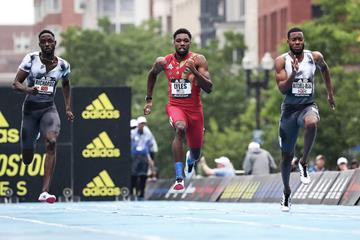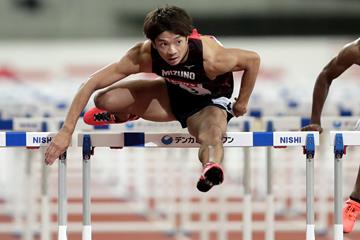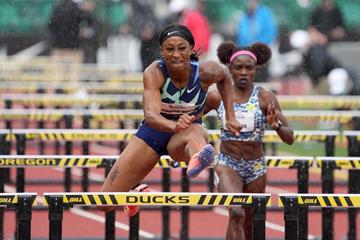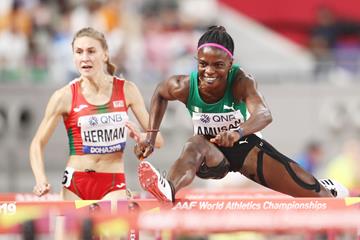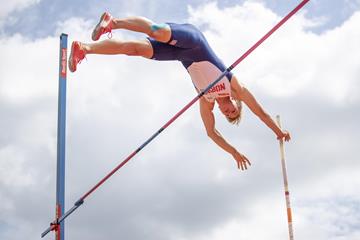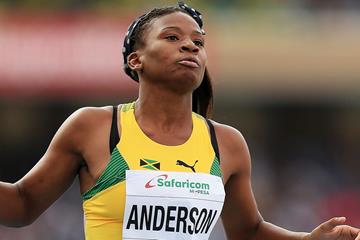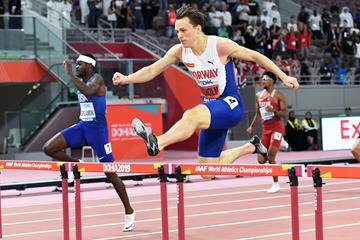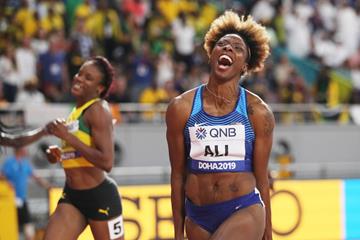 Countdown
Countdown
 Countdown
Countdown
The 100m hurdles is a women’s track and field event where athletes sprint over a series of 10 hurdles of 83,8cm (2ft 9in) set over a distance of 100m. The goal is to successfully clear the hurdles and cross the finish line in the fastest time.
Hurdling events were first held in England during the 1830s, when wooden barriers were placed along a 100-yard stretch
The 100m hurdles was featured at the inaugural Women’s World Games in 1922
An 80m hurdles event was introduced at the 1932 Olympics
The current format was first contested at the 1972 Olympics
The men’s equivalent, the 110m hurdles, has been contested since the 1896 Olympics
The women’s 100m hurdles demands speed, agility, precision and explosive power.
Each of the women’s 100m hurdles world record-holders has demonstrated these skills. The first was Karin Balzer of East Germany, whose 13.3 second run constituted the first recognised world record in 1969. Balzer’s illustrious career included one Olympic gold medal, three European titles and five additional world records. She achieved her best time of 12.6 seconds in 1971.
Another East German athlete broke Balzer’s record at the 1972 Olympics. Anneliese Ehrhardt completed the 100m hurdles in 12.5 seconds.
Since 1977, World Athletics has required fully automatic timing to the hundredth of a second for 100m hurdles world record attempts. In this era, Yordanka Donkova of Bulgaria became the first woman to break the 12.3 second barrier in 1986. She then continued to improve on her own time until she posted her final world record of 12.21 in 1988. Today, the world record is held by Tobi Amusan of Nigeria. She completed the 100m hurdles in 12.12 seconds in 2022 at the World Athletics Championships. This made her the first runner to finish the 100m hurdles in under 12.2 seconds.
Although the early years of the sport were dominated by athletes from East Germany, also competitors from the United States have risen through the ranks in recent years. They include Nia Ali and Kendra Harrison.
The current Olympic record belongs to Jasmine Camacho-Quinn of Puerto Rico. She ran the 100m hurdles in 12.26 seconds at the Tokyo Olympics. This performance made Camacho-Quinn the first Puerto Rican of Afro-Latino descent and the second person representing Puerto Rico to win a gold medal.
Numerous 100m hurdlers have produced stunning records, personal bests and notable performances. This includes one of the most decorated of all time: Gail Devers. The US athlete captured three world titles in the 100m hurdles (1993, 1995 and 1999) and two Olympic gold medals in the women’s 100m (1992 and 1996).
Devers’ career also had its challenges. She produced a dramatic performance at the 1992 Olympics, where she held a clear lead until being knocked off balance and losing momentum at the final hurdle. Her compatriot Lolo Jones suffered a similar fate when leading in the 2008 final. She heavily struck the penultimate barrier, lost precious momentum and wound up seventh.
More recently, Belgium’s Jolien Maliga Boumkwo went viral for her camaraderie. The shot putter ran the 100m hurdles at the 2023 European Athletics Team Championships. She stepped up for her injured teammate and contributed to the overall ranking of Belgian team.
The USA has won more Olympic gold medals in the 100 metres hurdles than any other nation. US athletes won gold at the Olympics in 1984, 2004, 2008 and 2016. In the latter, the USA became the first team to take bronze (Kristi Castlin), silver (Nia Ali) and gold (Brianna Rollins-McNeal) at one Olympics.

There are four main components of 100m hurdles technique:
Start and acceleration
The approach to the first hurdle
Clearing hurdles
Sprinting
Hurdling requires agility, exceptional reaction times and incredible power. Here’s a breakdown of the sprinting hurdles technique.
The 100m hurdles begins with an explosive start from the blocks. Timing here is crucial as sensors measure the positions of each athlete. If a competitor starts within 0.1 seconds of the starting pistol, it’s classed as a false start. The athletes are recalled and the competitor responsible is disqualified.
Once the race is under way, the athlete drives forward using powerful strides, building up speed towards the first hurdle. This phase is crucial for setting the rhythm of the race and most women complete this 13-metre sprint in eight steps.
To clear a hurdle, the athlete extends her lead leg straight and her trail leg follows closely behind, bent at the knee. Athletes train tirelessly to clear hurdles in the shortest time possible. This is achieved by minimising time in the air. The sprint between hurdles typically requires three steps. The fastest athletes can produce a consistent and rhythmic stride pattern.
The final part of the sprint hurdles technique involves a 10.5-metre sprint. After clearing the 10th hurdle, the competitor leans forward and propels herself towards the finish line.
The main 100m hurdles rules are as follows:
Athletes that cause a false start are disqualified
An athlete must stay in her designated lane throughout the race
Runners must clear each of the hurdles without intentionally knocking them over
An athlete shall be disqualified, if: their foot or leg is, at the instant of clearance, beside the hurdle (on either side) and below the horizontal plane of the top of any hurdle; or they knock down or displace any hurdle by hand, body or the front side of the lead lower limb; or they directly or indirectly knock down or displace a hurdle in their or in another lane in such a manner that there is effect or obstruction upon any other athlete(s) in the race, and/or another Rule is also infringed.
There is 13m to the first hurdle, 8.5m between hurdles thereafter, and 10.5m from the final hurdle to the finish
The winner of the 100m hurdles is the athlete who crosses the line first. In major competitions, the women’s 100m hurdles usually consists of heats, semifinals and a final. Each athlete typically performs one run per round.
There is no penalty for knocking over a hurdle in the 100m hurdles, as long as it’s not done deliberately. The hurdles are knocked down easily if touched, however, hitting hurdles can slow down athletes and affect their overall performance.
The men’s event was established by the universities of Oxford and Cambridge in the 1800s, who increased the distance of the event to 120 yards (109.7m). This, in turn, was rounded up to 110m by the French in 1888.
The women’s 100m hurdles event was introduced at a later stage and the length was designed by considering the average height and stride of female competitors.
Women’s 100m hurdles sit at a height of 83.3cm (33 inches), which is 22.9cm (9 inches) shorter than the men’s 110m hurdles. This height was selected based on the average height of female athletes.
The spacing between each hurdle in the 100m hurdles is 8.5m (27.9 feet). The exception is the first hurdle, which is placed at a distance of 13m (42.7 feet) from the starting block. The final hurdle sits 10.5m (34.5 feet) from the finish line.
There are a total of 10 hurdles in the 100m hurdles event.
 USA
USA
 SUI
SUI
 NGR
NGR
 USA
USA
 JAM
JAM
 JAM
JAM
 NED
NED
 BAH
BAH
 POL
POL
 USA
USA
